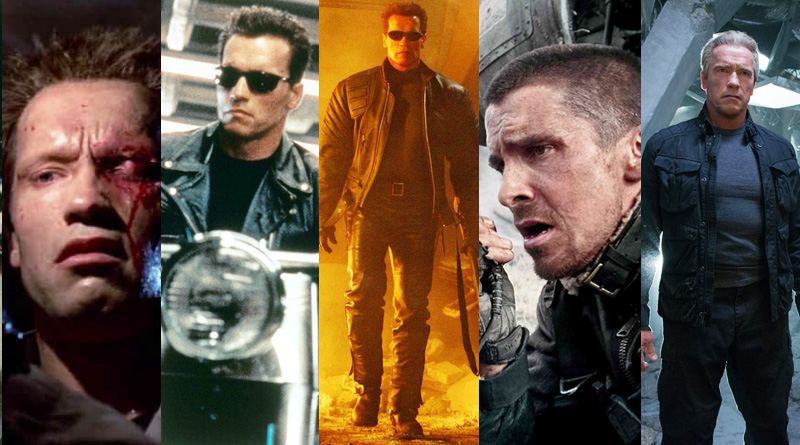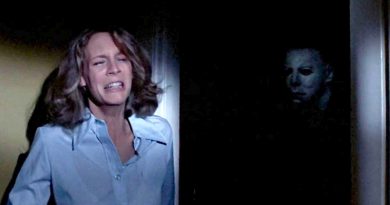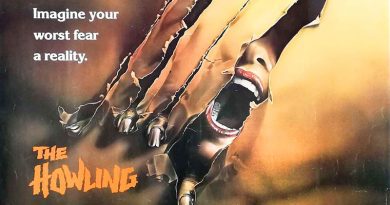Ranking Every Terminator Movie, From Worst to Best
The Terminator franchise has certainly come a long way since the eponymous first movie back in 1984. A low-budget sci-fi horror from a then-unknown director James Cameron, The Terminator became a surprise hit and launched a series of sequels over the next few decades. And like most Hollywood franchises, the Terminator franchise experienced its own ups and downs. Now, with the sixth movie — Terminator: Dark Fate — set to arrive in our local cinemas this October 24th, it’s time to look back at every past Terminator movie, all ranked from worst to best.
Terminator Genisys (2015)
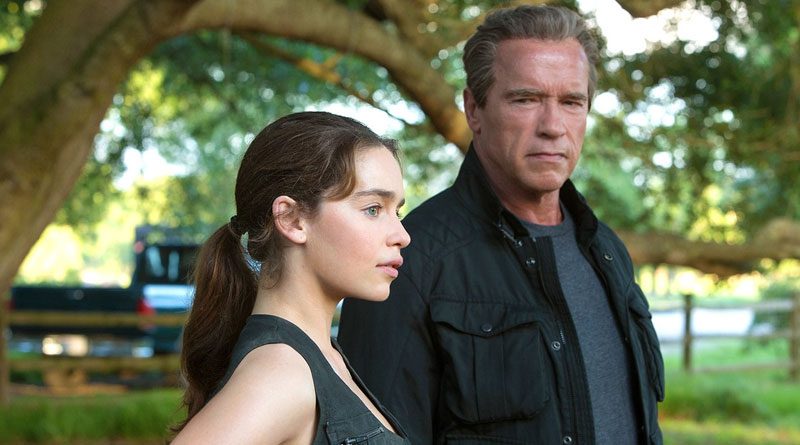
At the time of its release, Terminator Genisys was supposed to be Arnold Schwarzenegger’s biggest and most anticipated comeback since making his return to acting. He still exudes the same deadpan charm, even though he does look too old to play a physically-demanding role of an ageing T-800. Jason Clarke’s dual performance as the heroic John Connor before subsequently slipping into an antagonist role is actually admirable, while Lee Byung-Hun’s stoic portrayal as the Asian version of T-1000 is fairly adequate.
But the whole “alternate timeline” premise that gave this fifth movie an excuse for a soft reboot is clearly an ill-advised idea from the get-go. Why bother messing up the first two Terminator movies where they were already perfect enough? Because at the end of the day, all the so-called attempts are basically nothing more than overreliances of nostalgia factor and callbacks to entice the fans and audiences. Even the recurring time-travel elements are unnecessarily convoluted to the point that no amounts of expository-heavy moments can save the bloated mess of this movie.
Then, there are few misplaced casting, starting with Emilia Clarke’s too-cute-to-be-true performance as the battle-hardened Sarah Connor (her Game of Thrones co-star Lena Headey, who play the same role in TV’s short-lived Terminator: The Sarah Connor Chronicles is obviously the better candidate) as well as Jai Courtney’s bland and uncharismatic turn as Kyle Reese.
Alan Taylor, a TV veteran who directed a few episodes of notable series including The Sopranos and Game of Thrones, does a workmanlike job handling the action sequences. Except for the fact, they lack a certain flair and wow factor seen in the past instalments with certain action setpieces look like direct rip-offs from other movies, namely the 360-degree vehicular flip of a school bus that reminded me of the 18-wheeler truck flip in The Dark Knight (2008).
Terminator 3: Rise of the Machines (2003)
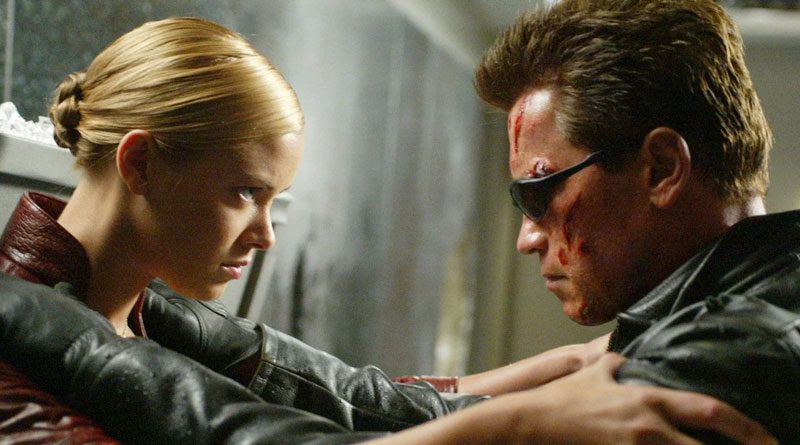
At nearly US$190 million worth of budget, Terminator 3: Rise of the Machines was once the most expensive film ever made at the time of its release. Director Jonathan Mostow, best known for his works in 1997’s Breakdown and 2000’s U-571, made good use of the massive budget for the well-staged action setpieces that utilise lots of practical effects. The elaborate Champion Crane chase sequence, in particular, is easily one of the franchise’s best action moments to date — the kind that would do James Cameron proud.
Arnold Schwarzenegger, who was already in his mid-50s, slipped back into his iconic T-101 role with relative ease while Nick Stahl and Claire Danes delivered decent supports as John Connor and Kate Brewster respectively. While the introduction of a female Terminator — nicknamed T-X — doesn’t exactly generate the same interest as Robert Patrick’s T-1000 in the second movie, then-relative newcomer Kristanna Loken acquits herself well enough with her suitably icy performance.
Shame about the plot, though, where John Brancato and Michael Ferris’ screenplay is basically a rehash of Terminator 2: Judgment Day with only a few tweaks here and there. Arnold’s signature one-liners are all there but the overall jokes tend to go overboard to the point of near-parody. The only other thing the screenwriters got it right is the pessimistic tone of the ending.
Terminator Salvation (2009)
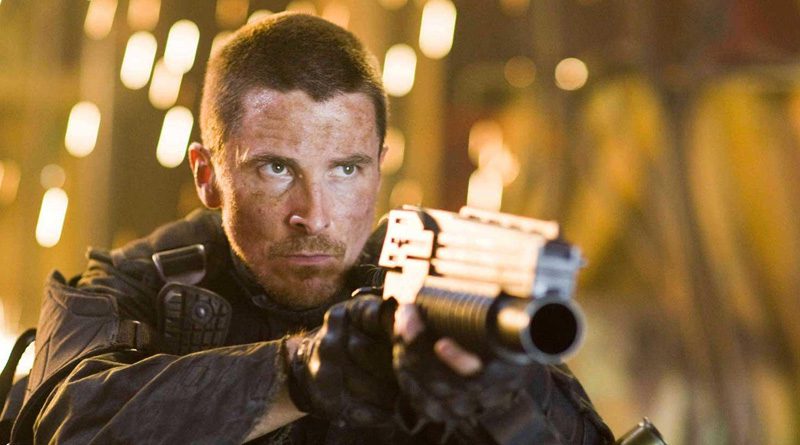
A US$200 million Hollywood sci-fi blockbuster that failed to secure the top spot over a certain comedy sequel called Night at the Museum: Battle of the Smithsonian on the US box-office’s opening weekend. It even tanked in the domestic and international box office, raking only a paltry US$371.4 million. Sure, it opened to mixed reviews and the behind-the-scenes controversies, notably Christian Bale’s infamous outbursts over cinematographer Shane Hurlbut.
The movie itself is often labelled for being cold and soulless and personally, I have to agree with that. Looking back at Terminator Salvation, it sure lacks the heart and soul of the first two movies.
But at least it remains a step-up over the overly jokey Terminator 3: Rise of the Machines. One thing for sure, McG should deserve credit for taking a bold risk eschewing the time-travel formula that preceded the first three movies and chose to go forward with the post-apocalyptic setting previously hinted in the past instalments.
The first 45 minutes are easily the best moments in this fourth movie, with McG’s capable direction of handling some of the franchise’s most exciting action setpieces. This includes a bravura single-take sequence involving an out-of-control helicopter and a Mad Max-like chase scene between a tow truck and a pair of self-riding Moto-Terminators. And whereas Christian Bale’s John Connor is nothing more than a one-dimensional role who spends most of the time growling, then-up-and-coming actor Sam Worthington shows promise as the no-nonsense Marcus Wright while Anton Yelchin brings solid support as the young Kyle Reese.
The Terminator (1984)
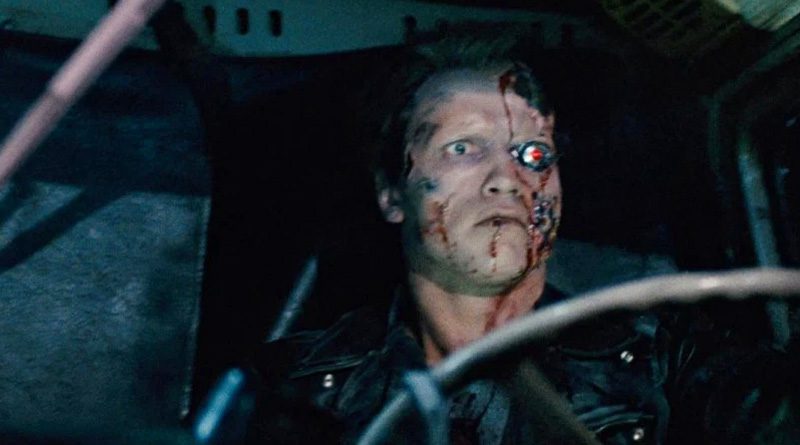
It may have been 35 years old since its initial release back in October 1984. But then-30-year-old James Cameron’s sophomore directorial effort (1982’s Piranha II: The Spawning) in The Terminator remains a prime example of how you could make a gripping sci-fi horror film even with a measly budget of US$6.4 million — a far cry from the subsequent expensive sequels that cost at least US$100 million upwards.
The special effects may look dated by today’s standard but credits still go to the late special effects wizard Stan Winston for bringing the iconic Terminator cyborg to life using practical effects. Then, there’s Fantasy II Film Effects — the legendary visual effects company responsible for creating realistic miniatures (notably the futuristic battle sequence and the climactic truck explosion scene) and the stunning stop-motion animation moment during a scene where Arnold Schwarzenegger’s T-800 emerged from the flame of a burning truck and revealed his entire metal body of endoskeleton.
Unlike the subsequent sequels, The Terminator is more of a horror film. A unique slasher genre with a gritty sci-fi twist where Arnold Schwarzenegger’s rare antagonist role echoes the similarity of a seemingly unstoppable killing machine akin to Halloween‘s Michael Myers and Friday the 13th‘s Jason Voorhees. Cameron’s imaginative direction is both taut and well-paced while then-unknowns Schwarzenegger, Linda Hamilton and Michael Biehn all deliver career-defining performances. And of course, who could forget Brad Fiedel’s signature synth-heavy industrial score that help elevate the sci-fi horror theme in this groundbreaking original?
Terminator 2: Judgment Day (1991)
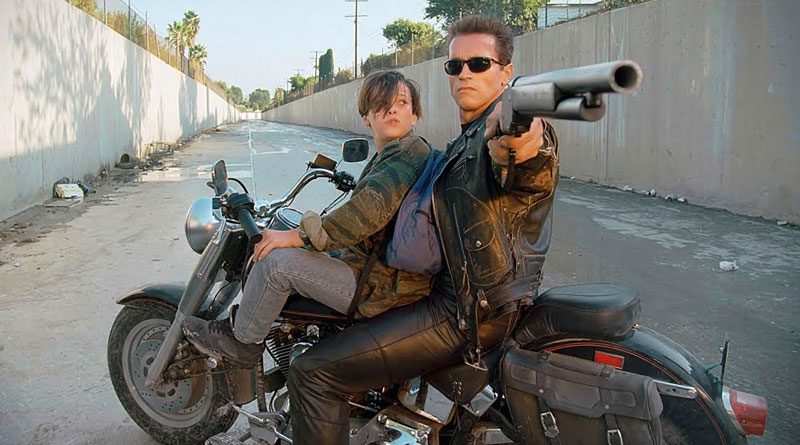
This is it — a rare Hollywood blockbuster sequel that surpassed the near-perfect 1984 original in many ways, notably in terms of its incredible special effects and action setpieces. By the time Terminator 2: Judgment Day opened to favourable reviews in July 1991, co-writer and director James Cameron already established himself as one of Hollywood’s top A-list filmmakers. The special effects are groundbreaking, particularly the introduction of shape-shifting liquid metal T-1000 played by the incomparable Robert Patrick in his perfectly stoic performance. Even viewing it by today’s standard, the effects still hold up pretty well.
Whereas Robert Patrick’s T-1000 and its liquid metal effects steal most of the show, let’s not forget this sequel showcase Arnold Schwarzenegger at the best peak of his career. His role reversal from a remorseless killing machine in The Terminator to a no-nonsense protector in this sequel is particularly admirable. The image of him riding a motorcycle while dressing all-black biker clothes and donning a pair of sunglasses while holding a shotgun forever etched in the memory of most viewers who have seen the movie. The decision of turning Linda Hamilton from a meek waitress from the first movie to a battle-ready, gun-toting Sarah Connor is one of the best strong female characters ever created since Sigourney Weaver’s Lt Ellen Ripley in the Alien franchise. Finally, there’s Edward Furlong, whose breakout role as the teenage John Connor proves he’s a bright star-in-the-making but too bad his subsequent acting career quickly went down the drain.
Terminator 2: Judgment Day is also best known for being the most expensive film at the time of its release, with a then-astonishing US$100 million budget used extensively for both special effects and action sequences. And speaking of action, Cameron pulls out all the stops with some of the most spectacular setpieces ever seen on the big screen, notably the truck-and-motorcycle chase through the storm drain and the climactic nighttime chase that concludes in a steel mill. Although the sequel is mostly an improvement over the original, it still hard to shake off the feeling that it does look and feel like an expensive remake of the first movie, complete with most of the same storytelling beats.

